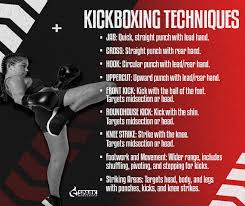Kickboxing Rules
SPORT
8/12/20253 min read


Kickboxing is a combat sport that combines striking techniques from boxing with the kicking movements of martial arts.1 While it's an exhilarating and dynamic sport, the rules can vary significantly depending on the specific style and governing body. Understanding these rules is crucial for both practitioners and spectators.
Common Styles and Their Rules
The rules of a kickboxing match are largely determined by the style being practiced. Here's a look at some of the most prominent rule sets:
Full Contact (American Kickboxing): This style is a blend of Western boxing and traditional karate. Bouts are fought with kicks and punches, but all strikes must be delivered above the waist.2 This rule set often requires a minimum number of kicks per round to ensure fighters are not just boxing. Fighters typically wear long pants, though this can vary.3
K-1 Style (Oriental/Japanese Kickboxing): This is one of the most widely recognized and popular rule sets.4 It's a more inclusive style that permits kicks to the legs (low kicks), punches, and knee strikes. Elbow strikes are generally prohibited, and clinching (holding an opponent to deliver strikes) is limited. The goal of these rules is to promote fast-paced, high-action fights.5
Low Kick: As the name suggests, this rule set allows for kicks to the legs, in addition to punches and kicks above the waist. It’s a step up in intensity from Full Contact rules, introducing a powerful new element to the fight.
Semi-Contact: This is a points-based system where the goal is to score more points than your opponent, rather than to cause a knockout. Strikes are "light" and the referee will stop the action after a point is scored. Kicks and punches are allowed above the waist, and points are awarded for clean strikes.
General Rules of a Kickboxing Match
Despite the variations between styles, several fundamental rules apply to most kickboxing competitions:
Scoring: The "10-Point Must System" is the standard scoring method.6 Judges award 10 points to the winner of a round, while the loser receives 9, 8, or sometimes 7 points depending on their performance.7 Judges evaluate fights based on knockdowns, effective impact, the number of clean strikes, and ring generalship (aggressiveness and control).8
Knockouts and Technical Knockouts (TKOs): A fighter is considered knocked down when they touch the canvas with any part of their body other than their feet as a result of a legal strike.9 A referee will administer a count.10 In some rule sets, the "Three Knockdown Rule" is in effect, meaning a fighter who is knocked down three times in a single round loses the bout by TKO.11
Fouls: A wide range of actions are considered fouls and can result in warnings, point deductions, or even disqualification. Common fouls include:
Striking the back of the head or spine.12
Striking a downed fighter.13
Striking to the groin or throat.14
Holding or using the ropes while striking.15
Headbutting, biting, or eye-gouging.
Intentionally delaying the match or not obeying the referee's commands.16
Rounds and Duration: The length and number of rounds can vary.17 Amateur bouts are typically shorter, often 3 rounds of two minutes each.18 Professional fights are longer, ranging from 3 to 12 rounds, with a one-minute rest period between each.
Weight Classes and Equipment: To ensure fair competition, fighters are divided into weight classes.19 These classes can vary by organization. In terms of equipment, all fighters are required to wear a mouth guard, and in amateur matches, head guards are often mandatory.20 Glove sizes are also regulated, with heavier gloves typically used for heavier weight classes.21
Kickboxing is a highly-regulated sport designed to ensure the safety of its participants while maintaining a high level of exciting combat.22 The specific ruleset dictates the flow and strategy of the fight, making it essential to know what is and isn't allowed before stepping into the ring.
